Pepper
Peppermint or English mint was created by crossing wild species (mint arvensis and wild mint) in England in the 17th century. The name pepper is explained by the presence of a burning taste of the leaves of the plant.
A perennial herbaceous medicinal plant with a pleasant aroma. There are more than 100 types of mint.
Chocolate
Perennial herbaceous plant . A subspecies of peppermint. The leaves are simple, elongated with serrated edges of a purple hue. The leaves have a light chocolate aroma. The stem is tubular, 60-120 centimeters high. The inflorescences are white-pink, less often purple or lilac. Blooms from June to August. Loves lighted areas, but also grows in the shade. Requires watering. Grows everywhere. Used for making tea and desserts. It is an excellent antiseptic and tonic.
Coleus
Tropical ornamental plant of the Lamiaceae family. The plant can act as a shrub, subshrub and annual herbaceous plant. The stems are tetrahedral, erect, 50-80 centimeters high. The leaves are serrated, broadly oval in shape, very brightly colored, velvety with various patterns of white-pink-green, bright red, dark brown, purple, violet. The flowers are located at the top of the plant in the shape of a complex spike. Coleus love bright light and plenty of watering with soft, warm water. They grow in countries with tropical climates. Widely used in medicine and as decoration for flower beds.
Mexican
A perennial plant with a pleasant spicy aroma of mint and anise. The stems reach a height of up to 1.5 meters. The leaves are ordinary oblong. The flowers are candle shaped. They come in white, violet and lilac colors. Flowering period
from mid-June to late autumn.
Curly
A perennial herbaceous hybrid plant with a pungent odor. The stem is densely leafy, with a height of 30 to 100 centimeters. The leaves are sessile on short petioles, curly, ovate, pubescent on both sides. The flowers are small, collected in false whorls, pink-purple in color. Flowering period from late June to late September. Grows in Ukraine and Crimea.
Catnip photo
Another name for this plant is catnip. It has a lemon scent and attracts cats. For people in magic, the grass attracts love and courage. The plant is used to create pharmaceutical gardens and rocky compositions. Catnip attracts with its decorative effect and long flowering. The plant loves moderate watering and does not tolerate stagnant water. It has no diseases or pests.
Like all mints, catnip is used in folk medicine. It is used as an anti-inflammatory, restorative and expectorant drug.
Room
There are several popular varieties of indoor mint. It is grown at home as an unusual flower. Some varieties can be freely used for culinary purposes.
Prayer tree
Perennial houseplant in the form of a shrub. Evergreen. The stem is thin, well branched, reaching a length of 1 meter. The leaves are small, pubescent, with a subtle pleasant scent. The edges of the leaves are carved. The flowers are ordinary purple in color, collected in inflorescences. The plant is light-loving. At room temperature it blooms all year round.
Scandinavian ivy
Indoor herbaceous plant
with lodging shoots. The stem is creeping. Reaches 1 meter in length. The leaves are rounded at the edges, jagged, green in color with a shiny tint. Not picky, grows in any climatic conditions.
Plectranthus Ertendahl
The houseplant is exclusively decorative in the form of a subshrub. Stems are erect and up to 1 meter high. The leaves are velvety bright green on one side and purple on the other. Blooms profusely. The flowers are collected in white false whorls.
Beneficial features
The plant is grown not for its beautiful appearance or aroma, but for the benefits it brings to humans.
Benefit:
- helps get rid of inflammation of the respiratory tract;
- is an antispasmodic and antiseptic;
- helps in treating colds;
- reduces blood pressure levels;
- strengthens vision;
- has an analgesic effect;
- calms, reducing the level of anxiety and panic;
- helps to sleep;
- helps with angina pectoris;
- relieves pain in the stomach and intestines;
- has a choleretic effect;
- treats constipation and flatulence;
- relieves headaches;
- improves appetite and much more.
There is a lot of talk about the benefits of this plant. In its pure form, mint is useful. In addition, it is used as a flavorful additive to bitter mixtures and medicines.
It is undesirable to use:
- children under 3 years old;
- patients with hypotension;
- people with individual intolerance;
- mothers during lactation.
The use of mint causes infertility and varicose veins, so you should consult your doctor before using it.
Doggystyle
perennial herbaceous plant
with creeping rhizome. The stem is pubescent, branched, tetrahedral, up to 60 centimeters high. The leaves are paired, opposite, long-petiolate, rounded-heart-shaped with a strong unpleasant odor. It blooms blue, light purple, less often reddish or white. The flowers are tubular, two-lipped, collected in whorls of several pieces. Flowering period from June to August. Grows in the European part of Russia, the Caucasus, Central Asia and Kazakhstan.
Where does it grow
The crop is grown in many countries around the world not only for personal but also for commercial purposes. In the southern regions, preference is given to perennial varieties, in the northern and in places with a temperate climate - annuals.
See also
Description of the Strawberry mint variety, recommendations for cultivation and careRead
Mint was brought to Russia from England at the end of the 19th century. The largest distribution area is observed in the middle zone of the state.
The light-loving plant is responsive to the sun's rays. Loves moist, fertile soils.
High productivity is achieved in the Crimea, Stavropol Territory, and the Caucasus. Some species grow in the Far East and Siberia. In the wild it is found near swamps, along the banks of rivers and lakes, in wet fields and meadows.
Longifolia
Perennial tall soft fluffy herbaceous plant. The whole plant has a grayish tint. The stem is branched, erect, slightly pubescent, reaching a height of 120 centimeters. The leaves are sessile, lanceolate, ovate, up to 20 centimeters long. Contains vitamin C, succinic, citric and malic acids. Whorls of small light purple flowers are collected in dense cylindrical spikes. Blooms in June-August. Grows in Africa, Asia, throughout Europe, in the North Caucasus.
The rarest and most expensive species
Some flower crops amaze the imagination with their smell, size, color or abilities that are unusual for the plant world.
There is a flower called Victoria regia. This is an unusual white water lily, which has leaves with a diameter of about 2 m, supporting a load weighing up to 50 kg on its surface. The flower lives for 5 years.
The largest flower on the planet reaches about 250 cm in height and at least 150 cm in width. This is Amorphophallus titanica. Many scientists consider the smell of this flower to be one of the most disgusting on the planet - it is a mixed smell of rotten eggs and fish. The uniqueness of the flower also lies in the fact that it begins to emit a scent only when it is touched.
Among the majestic peaks of the Andes, the Puya Raymond flower grows. This type of flower is considered endangered. It reaches a height of 10 m and about 8 thousand white flowers bloom on it at the same time. Flowers appear in the 80th year of life; after the fruits appear, the plant dies.
How to properly care for sha plectranthus (moth tree)
How to properly care for plectranthus when growing at home?
Below are some useful tips for growing the plant. First of all, you need to create conditions as close as possible to natural subtropical ones, which means high humidity, a lot of fresh air, warmth and light in large quantities. Adapts well to new conditions.
Location: bright, even sunny. The light should be soft and diffused - such lighting can be obtained on the windowsills of the southwestern or eastern part of the room. If the plant is placed on the south side, it is necessary to provide protection from direct sunlight, otherwise the shoots and leaves will instantly lose their decorative appearance.
The wrong amount of light - too much or not enough - will cause harm. When daylight hours are too short, a plant called plectranthus can receive light from a lamp. Can tolerate light shade. In summer, the plant feels great outdoors, on the balcony, in the garden.
Temperature: Not higher than 20 °C. The optimal temperature for it is 18-25° in summer and 12-16° in winter. Temperatures below these will cause leaf loss.
Air humidity: high only in very warm rooms. Since the flower develops quickly, it spends a lot of energy growing leaves, which requires more moisture. This can be achieved by spraying and generous watering. It will be especially useful to carry out this procedure on days when the temperature is above 22°.
Watering: the substrate should always be damp. In March-September, watering should be plentiful, when the top layer is already dry. During the autumn-winter season it is quite moderate. It is necessary to water with settled water, making sure that the temperature is at room temperature.
Caring for plectranthus when growing it in cold seasons becomes less intense: the soil in the pot may dry out a little - at this time the plant is dormant. Watering in winter accordingly becomes more rare and less intense - it will be enough to do this once every 3-4 days.
Substrate: Flower soil mixture. The mixture of soil for mint is not very dense: 2 parts - humus, turf soil, 1 part leaf soil (or garden soil), 0.5 parts each - peat, river sand.
If these conditions are met, even for a beginner, caring for plectranthus in normal home conditions will be a simple matter.
Feeding: every week during the growth period. In winter, once every 4 weeks. Fertilizing in spring and summer twice a month, with alternating fertilizers - either mineral or organic.
Transplantation: It is better to grow young plants. When you have just purchased mint, it is better to transplant it at the same time. Without disturbing the earthen lump, move the mint into a container with a large diameter. It can be planted in open ground only when the weather has become stable and frosts at night are not expected.
During the first 5 years of growth, replanting should be carried out annually, the rest of the time - depending on the growth of the flower, but much less often. The root system of plants is powerful, so high pots are needed and a drainage layer must be placed at the bottom.
Pests, diseases: rare. But nevertheless, plectranthus, or indoor mint, is easily accessible to pests such as spider mites, aphids, scale insects, and whiteflies. They arise due to insufficient air humidity.
Only spraying with various insecticidal preparations will help get rid of these pests. Be sure to do this in the fresh air.
When growing this subtropical beauty, it is necessary to solve all problems in a timely manner. These include, for example, the following difficulties:
- Yellowing of foliage;
- Drooping stems;
- Leaf discoloration;
- Excess irrigation water.
The foliage turns yellow and falls off usually due to too low air temperature or excess moisture. This also leads to the root system rotting.
Withering leaves and limp stems - due to lack of irrigation water, and constant. Leaves become discolored and burn out when exposed to direct sunlight.
Excess irrigation water leads to the formation of powdery mildew. It looks like grayish spots on the surface of the leaves.
You can cure the plant by spraying it with a solution: 100 g of serum per 300 g of water. Also at the same time reduce the amount of water used.
Pruning: If you regularly trim the tops of the shoots, the plant bushes better.
Traditional medicine recipes
Diseases of the heart and nervous system
1 tsp pour 200 ml of leaves. boiling water Cover with a lid, wrap and leave for half an hour. Strain, squeeze out the raw materials.
Take 1/2 tbsp. three times a day before meals.
The infusion is prescribed for nervous disorders, insomnia, angina pectoris, and also to improve heart function.
Gastritis
Make a collection of 4 parts (by weight) peppermint (leaf) and 1 part centaury (herb).
2 tsp collection pour 200 ml. boiling water Cover with a lid, insulate and let sit until warm. Strain, squeeze out the raw materials.
Take 1 tbsp. three times a day half an hour before meals.
The infusion is drunk to treat gastritis with high acidity, in the presence of pain in the liver area.
Bloody vomiting
1 tbsp. mint pour 200 ml. boiling apple cider vinegar. Cover with a lid, wrap and leave for 40 minutes. Strain, squeeze out the raw materials.
Take 1-2 tsp. once or twice a day.
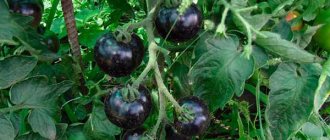


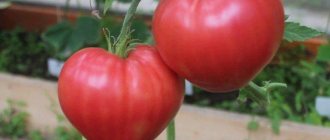


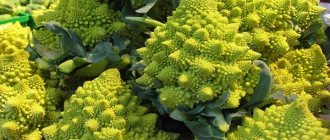


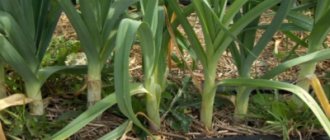
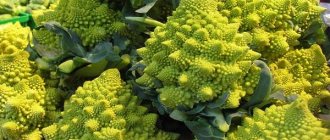
![Tinkoff (Debit card) [CPS] RU](https://adzumi-sushi.ru/wp-content/uploads/tinkoff-debetovaya-karta-cps-ru41-330x140.jpg)